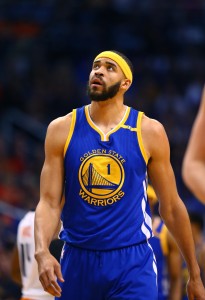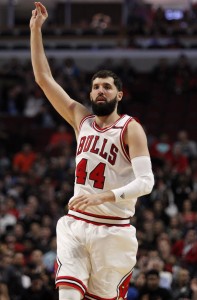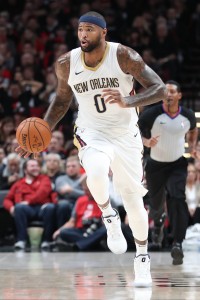When we discuss the NBA’s salary cap, we often refer to a team’s position in relation to either the cap itself or to the luxury tax line. For the 2017/18 season, the league has a salary cap of $99.093MM, with a luxury tax threshold of $119.266MM. With the exception of a few potential taxpayers and a few clubs with cap room, most team salaries fall between those two figures.
There’s at least one more key figure related to the salary cap though, and that’s the salary floor, as it’s informally known. The salary floor, which is 90% of the salary cap, is the minimum amount that a team must spend on its roster in a given NBA season. For 2017/18, that amount is $89,183,700.
While it’s possible that more teams will dip below the salary floor based on moves they make at the trade deadline, for now there are just two teams below that line, according to Basketball Insiders’ salary data. Those teams are the Mavericks ($85,669,472) and the Bulls ($83,223,828).
Both the Mavs and Bulls are actually functioning as over-the-cap teams at the moment, since they have various mid-level and trade exceptions that they haven’t renounced — added to their respective team salaries, those exceptions take them over the $99.093MM cap line. Still, that exception money isn’t technically being spent on any players right now, so it doesn’t count toward each club’s minimum salary.
Under the NBA’s old Collective Bargaining Agreement, it was fairly easy for teams below the salary floor to game the system. At the deadline, a team could simply acquire a highly-paid player whose cap hit would take the team over the salary floor, despite the fact that the club would only owe that player a prorated portion of his salary.
For instance, a year ago, the Sixers took on Andrew Bogut‘s $11MM+ salary as part of the deal that sent Nerlens Noel to Dallas. Bogut’s full $11MM+ cap hit counted for minimum team salary purposes for Philadelphia, but the Mavs had already paid a majority of the center’s salary, since the trade happened with less than two months left in the season. In other words, despite only having to pay about $3MM that was left on Bogut’s contract, the Sixers were able to artificially put an extra $8MM toward the calculation of their minimum team salary.
The league’s new Collective Bargaining Agreement closed that loophole. Now, players traded or acquired during the season will only count toward a team’s minimum salary for the amount that they were paid by that team. So the Bulls can’t simply acquire a player earning $7MM to get above the salary floor — if 40% of the season remains, that player would only count for $2.8MM toward Chicago’s minimum team salary, with the other $4.2MM applying to his old club’s minimum team salary.
With those new rules in mind, it will be interesting to see how the Bulls and Mavericks approach the trade deadline. In order to reach the salary floor based on the new guidelines, each team would have to use nearly all of its remaining cap room. While Chicago and Dallas should be willing to take advantage of that cap space to take on a contract or two if it means acquiring some extra assets in the process, that sort of deal may not be worth it if it adds major long-term money to the books. In that case, it may simply make more sense for the teams to finish the year below the salary floor, then make up the difference at season’s end by paying out the shortfall to their players.




